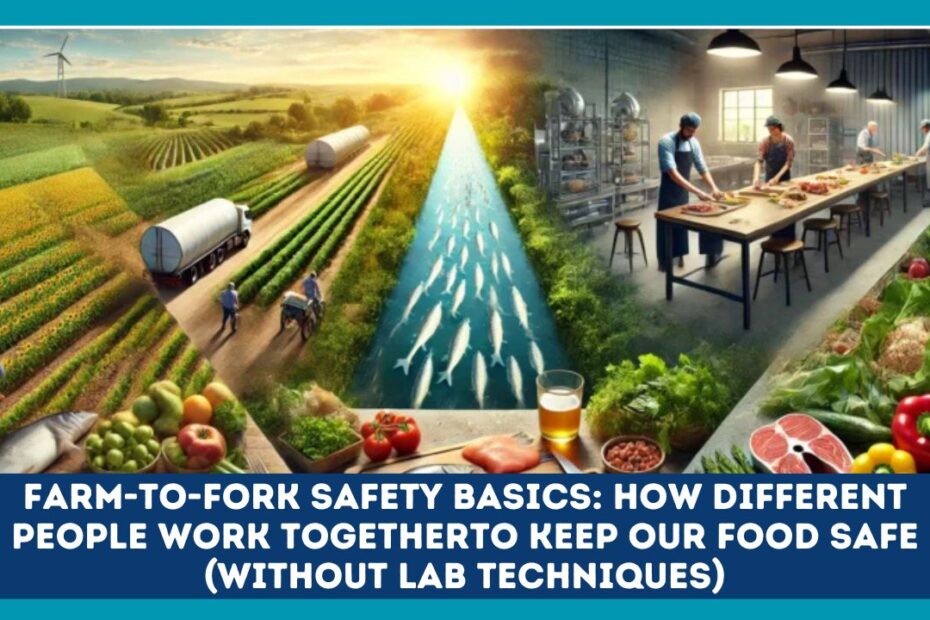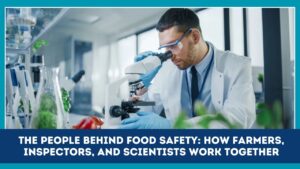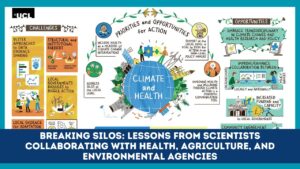At every step from the field to the dinner plate, food safety relies on collaboration—without needing advanced laboratory techniques.
From farmers, transporters, inspectors, retailers, restaurant staff, right down to consumers, each plays a vital role.
This article explores how these stakeholders work together using practical, non-lab-based strategies, backed by the most recent global and national foodborne illness data and standards.
Global & National Foodborne Illness Overview
Here are the latest stats that highlight why farm-to-fork safety matters:
| Region | Annual Cases of Foodborne Illness | Hospitalizations | Deaths |
|---|---|---|---|
| Global | 600 million cases | – | 420,000 |
| United States | 48 million cases | 128,000 | 3,000 |
| European Union (2023) | 5,691 outbreaks reported | – | – |
These figures spotlight the scale of the challenge across regions.
Farm-to-Fork Chain: Who Does What
Farmers & Producers
- Ensure clean water and soil for planting.
- Use safe practices: proper composting, crop rotation, pest control without chemicals.
- Harvest with sanitized equipment and avoid cross-contamination between raw and ready-to-eat produce.
- Use cold-chain management—keeping perishable items at or below 4 °C to slow bacterial growth before transport.
Transporters & Logistics
- Maintain consistent cold-chain temperatures (≤ 4 °C for refrigerated items; −18 °C for frozen).
- Clean and sanitize vehicles and containers regularly.
- Use First-In-First-Out (FIFO) and track produce using Key Data Elements (KDEs) and Critical Tracking Events (CTEs) as required under the latest traceability rules effective January 20, 2026.
Inspectors & Regulators
- Set standards of practice through international frameworks like Codex Alimentarius and industry benchmarks such as GFSI.
- Enforce national regulations ensuring Good Agricultural Practices (GAPs), Good Distribution Practices (GDPs), and traceability.
- Conduct regular on-site audits of farms, warehouses, and retailers focusing on sanitary conditions, worker hygiene, and temperature control.
Retailers & Food Service Staff
- Train staff on proper handling, cleaning schedules, and separation of raw and ready-to-eat foods.
- Implement and monitor cold-chain procedures using calibrated thermometers.
- Display ‘use-by’ or ‘best-before’ dates and rotate inventory to ensure fresh produce reaches customers—using FIFO rules.
- Emphasize proper cooking times and temperatures in food prep to eliminate pathogens.
Consumers & Households
- At home, maintain fridge at or below 4 °C, freezer at −18 °C.
- Follow FIFO: use older items first.
- Practice proper cleaning: wash hands, clean utensils, and sanitize surfaces regularly.
- Cook foods to recommended internal temperatures.
- Avoid cross-contamination—use separate cutting boards for raw meats and vegetables.
Traceability: Tracking Without High-Tech Labs
- Leverage documentation at each step—date of harvest, temperature logs, cleaning records.
- Use manual or digital logs to track KDEs (like batch codes, harvest dates) and CTEs (like packing, shipping events).
- In case of a food safety issue, these records enable quick identification and targeted recalls—no lab tests needed for traceability alone.
Safety Checks Without Lab Equipment
Various visual, tactile, and thermal methods help detect potential hazards:
- Visual inspection: check for mold, discoloration, spoilage.
- Smell and touch: off odors or slimy texture signal spoilage.
- Temperature check: use thermometers to verify cooking or storage temps.
- Record logs: temperature charts, cleaning logs, and staff checklists help monitor compliance.
- Staff training: knowledgeable personnel recognizing early warning signs reduces reliance on testing labs.
Combined Roles: A Safety Net at Every Link
Each actor in the chain fills a gap no lab technique can replace:
- Farmers focus on preventing contamination at source.
- Transporters maintain safe conditions en route.
- Inspectors enforce standards and traceability.
- Retailers uphold safe handling and customer-facing practices.
- Consumers reinforce food safety at home.
Together, this creates a multi-layered defense where prevention, observation, and correct documentation make food safe.
Roles & Tools in Farm-to-Fork Safety
| Stage | Key Role | Non-lab Strategy |
|---|---|---|
| Farm | Prevention of contamination | Clean water/soil, sanitation |
| Transport | Temperature control, hygiene | cold-chain, cleaning logs |
| Inspection | Regulatory oversight | Audits, documentation |
| Retail | Safe handling & display | Staff training, FIFO, rotation |
| Consumer | Home food safety | Fridge temps, cleaning, cooking |
Farm-to-fork food safety functions on a foundation of coordinated efforts, prevention, and practical strategies rather than sophisticated lab tests.
Latest global data—such as 600 million foodborne cases annually and over 420,000 deaths worldwide—highlight the importance of vigilance. By working together—farmers, transporters, regulators, retailers, and consumers—we can uphold robust safety chains using documentation, visual checks, hygiene, and temperature controls.
This approach builds public trust and ensures safe, healthy meals without reliance on laboratory infrastructure.
Frequently Asked Questions
1. How does traceability work without lab tests?
Traceability relies on documenting Key Data Elements (KDEs) and Critical Tracking Events (CTEs)—like batch numbers, harvest dates, and shipping logs—that ensure every item can be traced, enabling rapid response in case of issues.
2. What non-lab method ensures safe food transport?
Strict cold-chain maintenance—keeping perishable foods at 4 °C or below (and −18 °C for frozen items)—along with clean transport vehicles and proper documentation, ensures food safety during transit.
3. How can I keep food safe at home without testing equipment?
Keep your fridge at or below 4 °C, freezer at −18 °C, use FIFO for inventory, clean surfaces and utensils, avoid cross-contamination, and cook foods to recommended internal temperatures—all effective without lab tools.



